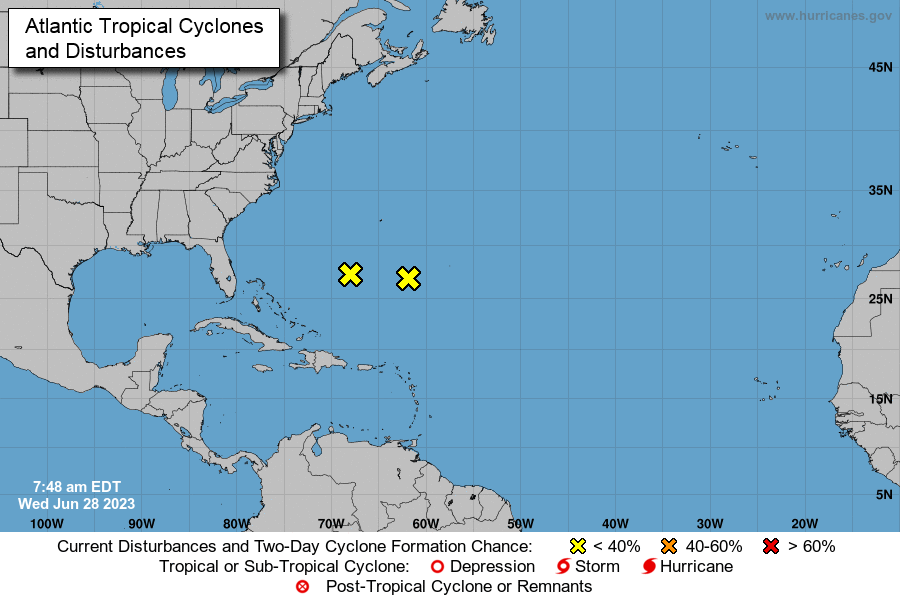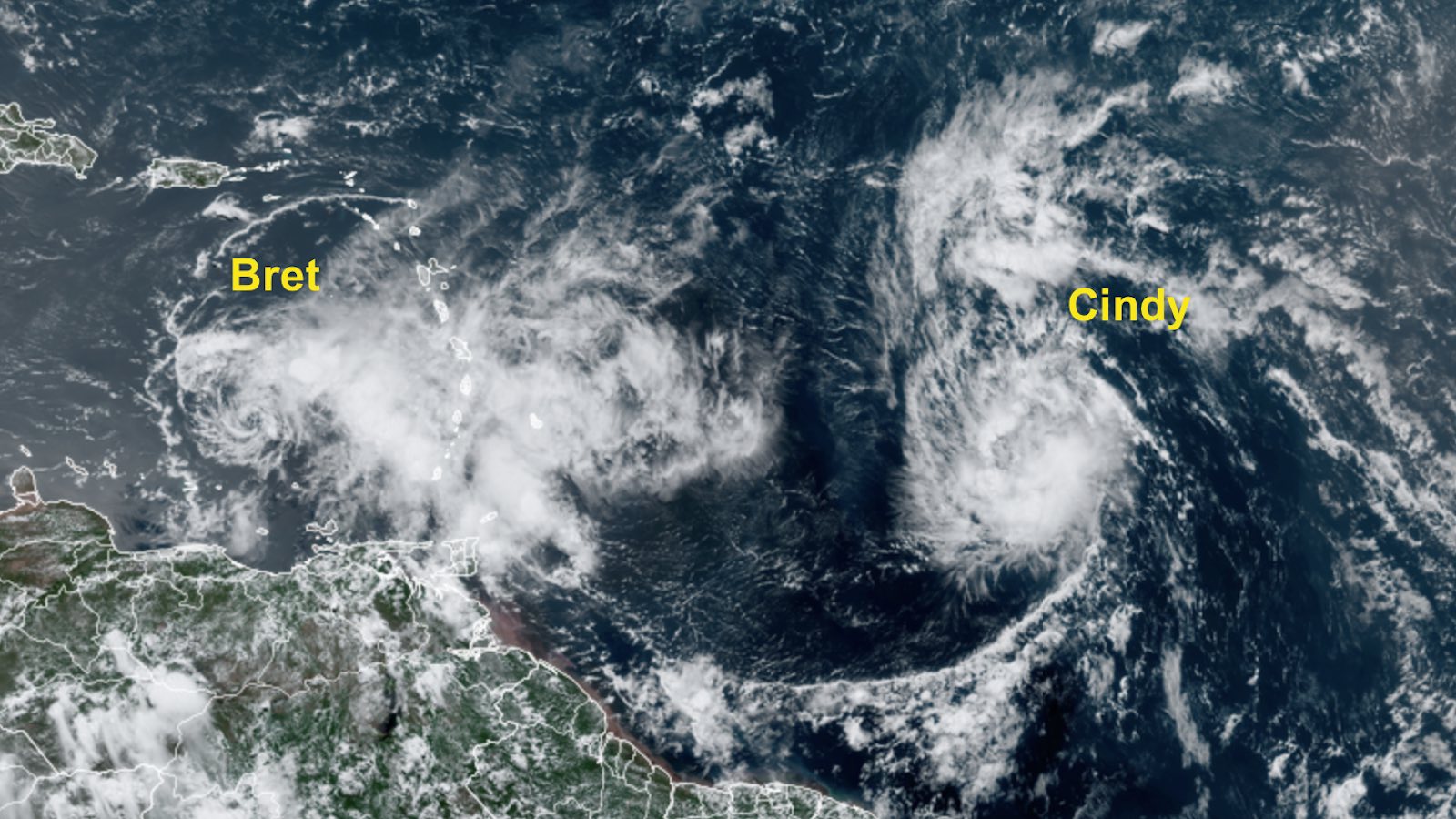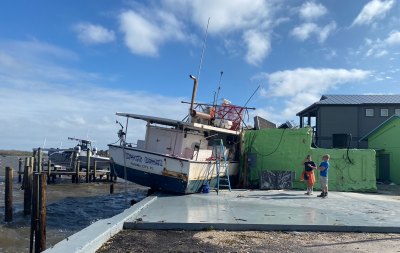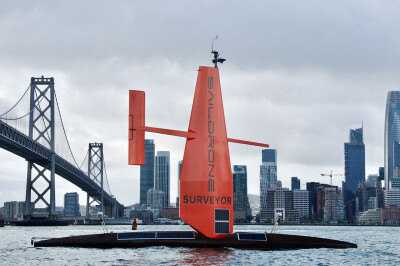For about a month now, the 2023 hurricane season has been off to a rugged start. In the far Atlantic region, we’ve had three storms hit with a potential for a fourth by the end of the month. Tropical Storm Arlene kicked off the season and lasted less than three days.
Over the past week, storm activity has picked up in parts of the Atlantic Ocean that don’t usually see an increase in activity until mid to late August at the earliest.
Tropical Storm Bret dissipated as of 5:00 pm this past Saturday, as Tropical Storm Cindy moved northwest at speeds up to 21 mph. The maximum sustained wind speed was near 50 mph with higher gusts.
Late Sunday night, the final advisory on Cindy was announced; however, as of Wednesday, Cindy’s remnants could come back to life near Bermuda but will not pose a threat to the U.S. Cindy’s “ghost” is expected to move northward into a small pocket of lower wind shear, which is what ripped apart the storm this past weekend. The concern is that the wind combined with the relatively warm ocean could allow for thunderstorms to become clustered once more and reform a tropical depression or storm later this week.

The prediction states that if Cindy springs back to life near Bermuda, the storm may drift north and possibly somewhat east. Guidance suggests either a depression or, at most a low-end tropical storm.
Tropical Storms Cindy and Bret made history by becoming the first pair of active storms at one time since June 1968. Cindy had formed in the area where Bret initially came to life, while another strong tropical wave was expected to move off the western coast of Africa.
NOAA predicted for the 2023 Atlantic hurricane season near-normal hurricane activity. NOAAs forecasted a range of 12-17 total named storms, of those 5 to 9 could become hurricanes, including 1-4 major hurricanes. NOAA has 70% confidence in these ranges.

As of Tuesday, Tropical Storm Adrian, which formed off the southwest coast of Mexico marks the first of the 2023 Eastern Pacific hurricane season. Adrian is 300 miles southwest of Manzanillo, Mexico with maximum sustained winds of 60 mph. As it moves 12 mph to the west, Adrian is expected to change into a hurricane.
NOAA’s 2023 eastern Pacific hurricane season is predicted to produce 14-20 storms with a 70% probability for each range. Of which, 7-11 are expected to become hurricanes, and 4-8 hurricanes are expected to become major hurricanes. These ranges are centered above the official National Hurricane Center season averages from 1991-2020, which was 15 named storms, 8 hurricanes, and 4 major hurricanes.
Combining the total seasonal activity, NOAA predicts that the 2023 outlook indicates a 70% chance that Accumulated Cyclone Energy range will be 90% to 155% of the median. This means a near-normal season with certain regions teetering into the above-average range.







